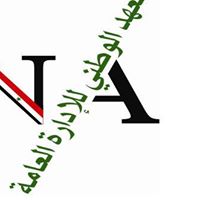اشترك بالحزمة الذهبية واحصل على وصول غير محدود شمرا أكاديميا
تسجيل مستخدم جديدRobust quantum network architectures and topologies for entanglement distribution
66
0
0.0
(
0
)
اسأل ChatGPT حول البحث

ﻻ يوجد ملخص باللغة العربية
Entanglement distribution is a prerequisite for several important quantum information processing and computing tasks, such as quantum teleportation, quantum key distribution, and distributed quantum computing. In this work, we focus on two-dimensional quantum networks based on optical quantum technologies using dual-rail photonic qubits for the building of a fail-safe quantum internet. We lay out a quantum network architecture for entanglement distribution between distant parties using a Bravais lattice topology, with the technological constraint that quantum repeaters equipped with quantum memories are not easily accessible. We provide a robust protocol for simultaneous entanglement distribution between two distant groups of parties on this network. We also discuss a memory-based quantum network architecture that can be implemented on networks with an arbitrary topology. We examine networks with bow-tie lattice and Archimedean lattice topologies and use percolation theory to quantify the robustness of the networks. In particular, we provide figures of merit on the loss parameter of the optical medium that depend only on the topology of the network and quantify the robustness of the network against intermittent photon loss and intermittent failure of nodes. These figures of merit can be used to compare the robustness of different network topologies in order to determine the best topology in a given real-world scenario, which is critical in the realization of the quantum internet.
قيم البحث
اقرأ أيضاً
Modern deep learning has enabled unprecedented achievements in various domains. Nonetheless, employment of machine learning for wave function representations is focused on more traditional architectures such as restricted Boltzmann machines (RBMs) an
d fully-connected neural networks. In this letter, we establish that contemporary deep learning architectures, in the form of deep convolutional and recurrent networks, can efficiently represent highly entangled quantum systems. By constructing Tensor Network equivalents of these architectures, we identify an inherent reuse of information in the network operation as a key trait which distinguishes them from standard Tensor Network based representations, and which enhances their entanglement capacity. Our results show that such architectures can support volume-law entanglement scaling, polynomially more efficiently than presently employed RBMs. Thus, beyond a quantification of the entanglement capacity of leading deep learning architectures, our analysis formally motivates a shift of trending neural-network based wave function representations closer to the state-of-the-art in machine learning.
We propose a scheme to utilize photons for ideal quantum transmission between atoms located at spatially-separated nodes of a quantum network. The transmission protocol employs special laser pulses which excite an atom inside an optical cavity at the
sending node so that its state is mapped into a time-symmetric photon wavepacket that will enter a cavity at the receiving node and be absorbed by an atom there with unit probability. Implementation of our scheme would enable reliable transfer or sharing of entanglement among spatially distant atoms.
Establishing entanglement between distant parties is one of the most important problems of quantum technology, since long-distance entanglement is an essential part of such fundamental tasks as quantum cryptography or quantum teleportation. In this l
ecture we review basic properties of entanglement and quantum discord, and discuss recent results on entanglement distribution and the role of quantum discord therein. We also review entanglement distribution with separable states, and discuss important problems which still remain open. One such open problem is a possible advantage of indirect entanglement distribution, when compared to direct distribution protocols.
Quantum key distribution (QKD) is a crucial technology for information security in the future. Developing simple and efficient ways to establish QKD among multiple users are important to extend the applications of QKD in communication networks. Herei
n, we proposed a scheme of symmetric dispersive optics QKD (DO-QKD) and demonstrated an entanglement-based quantum network based on it. In the experiment, a broadband entanglement photon pair source was shared by end users via wavelength and space division multiplexing. The wide spectrum of generated entangled photon pairs was divided into 16 combinations of frequency-conjugate channels. Photon pairs in each channel combination supported a fully-connected subnet with 8 users by a passive beam splitter. Eventually, it showed that an entanglement-based QKD network over 100 users could be supported by one entangled photon pair source in this architecture. It has great potential on applications of local quantum networks with large user number.
As two valuable quantum resources, Einstein-Podolsky-Rosen entanglement and steering play important roles in quantum-enhanced communication protocols. Distributing such quantum resources among multiple remote users in a network is a crucial precondit
ion underlying various quantum tasks. We experimentally demonstrate the deterministic distribution of two- and three-mode Gaussian entanglement and steering by transmitting separable states in a network consisting of a quantum server and multiple users. In our experiment, entangled states are not prepared solely by the quantum server, but are created among independent users during the distribution process. More specifically, the quantum server prepares separable squeezed states and applies classical displacements on them before spreading out, and users simply perform local beam-splitter operations and homodyne measurements after they receive separable states. We show that the distributed Gaussian entanglement and steerability are robust against channel loss. Furthermore, one-way Gaussian steering is achieved among users that is useful for further directional or highly asymmetric quantum information processing.
سجل دخول لتتمكن من نشر تعليقات
التعليقات
جاري جلب التعليقات


سجل دخول لتتمكن من متابعة معايير البحث التي قمت باختيارها


